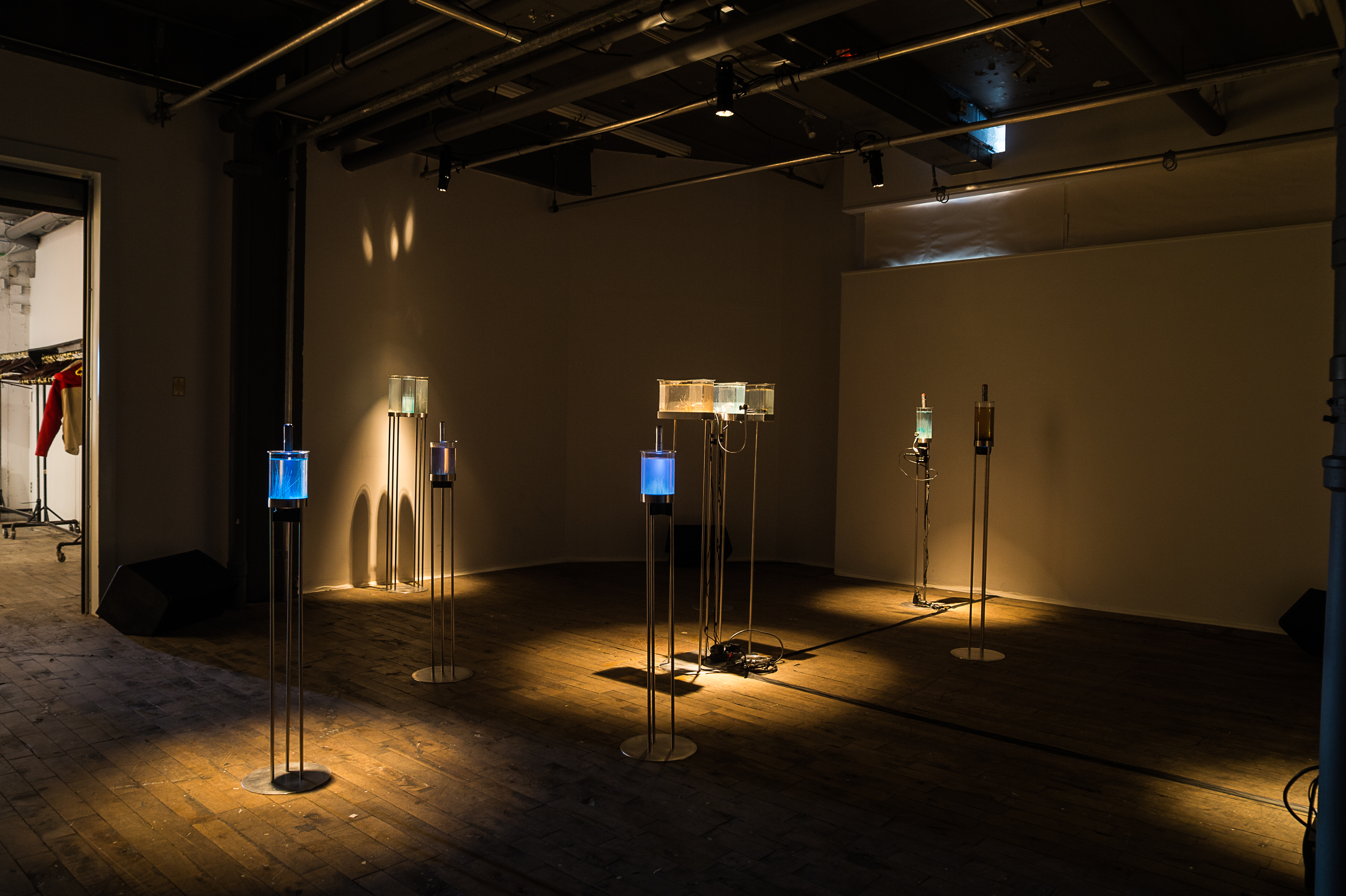Variations on the trope of “deus ex machina,” or “god from the machine” have been thrown around a lot in popular culture lately. From Alex Garland’s movie Ex Machina to the latest theme of the New York City Metropolitan Museum of Art gala, Manus x Machina, artists are responding to the confluence of art and technology. The use of the trope in these cases explores the role of technology as a device capable of creating expedient solutions to the trials of society.
The playful aspects of technology and its ability to facilitate new sensory experiences are rarely given attention in the contemporary artistic zeitgeist. The device art triennial at Montreal’s Eastern Bloc Gallery ran from May 5 to June 1, and exhibited an array of interactive innovative devices, recognizing their integral role in our daily lives. Beyond simply making our lives more efficient, these devices seeked to create new experiences.
Developments in biotechnology, manifested in the bio art movement of the 90s, and a focus on creating interactive experiences, were at the forefront of many of the artists’ initiatives. Some highlights of the exhibition included Robertina Sebjanic, Ida Hirsenfelder, and Ales Hieng-Zergon’s Chemobrionic Garden (Time Displacement), which explores the relationship between hydrothermal chemistry, time, and evolution; Martina Mezak’s Urania, a cloud making device; and Lightune. G’s unconventional lighting and sound system in Lighterature Reading.
Device art explores the interaction between humans and their devices in society, encouraging us to embrace technology not only as a tool on which to depend, but also as a producer of experience.
Davor Sancincenti’s sound installation, Ø, involved a polished Istrian olive tree stump which, when touched, activated sonorous or surreal sounds that came from behind the viewer. The consequences of the viewer’s actions, or the sounds generated through the interaction with the art object, were invisible to the eye but were deeply felt by the viewer. The creation of distant sounds through the close interaction with the art object convinced the viewer of the universal significance of their actions, making a statement on the far-reaching impacts of one’s actions on their environment. The use of technology to re-animate the tree stump shed a positive light on the prospect of human beings working with nature, rather than against it.
As most of the artists were of Eastern European and Japanese descent, specific regional artistic influences were spotted throughout the exhibit. For instance, the influence of 20th century Russian constructivism, which emphasized the practical qualities of art and aestheticized its process, was seen in many of the artists’ works, with their devices adopting an architectural quality. This influence as well as early Japanese forays in kinetic art was evident in Takeshi Oozu’s The Escaping Chair, which automatically moved away from the sitter when approached.
Subverting the common narrative that technology desensitizes us, the exhibit explored ways to look optimistically at the presence of technology in our daily lives and considered its potential to deepen sensory experience.
In The Escaping Chair, our perceived relationship with furniture was undermined as the dynamic between the willful sitter and passive object was reversed. Typically, we depend upon furniture for comfort, both physically and mentally, in their ability to mould themselves to our bodies. Oozu played upon this dependence on inanimate objects and our delusion of a shared intimacy. The body and furniture became intertwined, and this intimate yoking of body and object gave the artwork an erotic quality. Ultimately, the anthropomorphic piece of furniture encouraged us to think critically about the nature of technology. Oozu explained in a panel interview that the viewer became conscious of the chair possessing a “will.”
Device art explores the interaction between humans and their devices in society, encouraging us to embrace technology not only as a tool on which to depend, but also as a producer of experience. The aim of Sanvincenti’s interactive work was to use technology to facilitate sensory experience, and to do so in a way that is not a perversion of nature, but rather an improvement upon it. He did not want to impede the abilities that make us human, such as our sensory faculties, but to attune ourselves to them and exploit their potential, which he did by connecting sight with sound. Meanwhile, the animation of Oozu’s chair demonstrated how technology can be used to create life in places devoid of it.
In an era defined by the plurality of artistic visions and styles, the device art movement responds creatively to some of the most central concerns we face. Subverting the common narrative that technology desensitizes us, the exhibit explored ways to look optimistically at the presence of technology in our daily lives and considered its potential to deepen sensory experience.
